Introduction to Redundant Pairs
■ Background
EtherWAN's Alpha-Ring (α-Ring) protocol was introduced in 2009. Alpha-Ring allows for the creation of Ethernet ring topologies in which one segment is kept deactivated as a backup path. When any segment of the ring is disconnected or fails for some reason, the backup path will be activated and connectivity reestablished within 15 milliseconds.
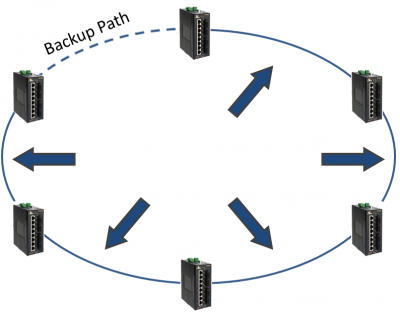
Figure 1: In the Alpha-Ring above, if any one of the links indicated by the arrows fails, the backup path (shown as a dotted line) will be activated in less than 15ms.
With Alpha-Ring, two or more rings can be connected with “Ring Coupling,” which acts as a redundant network between individual rings. This allows a single large ring that contains numerous switches to be broken into smaller, more manageable ring networks. Using Ring Coupling, a ring can be connected to another ring running any redundant protocol (RSTP, STP, MSTP, and even proprietary protocols from other manufacturers). Below are some example topologies that use Ring Coupling.

Figure 2: In the above diagram, two Alpha-Rings are connected by Ring Coupling. It is not necessary for both rings to use the Alpha-Ring protocol; either ring could be running RSTP, STP, or MSTP.
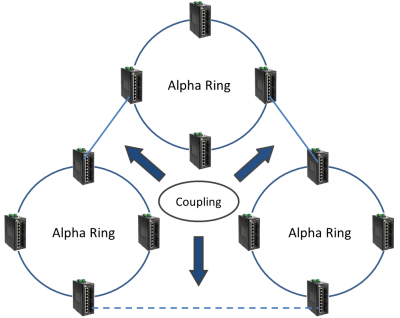
Figure 3: Three connected rings using Ring Coupling.

Figure 4: Two rings coupled with a series of switches. The backup path (indicated by the dashed line) will be activated within 50 milliseconds if any of the coupling links fail.
However, Ring Coupling is limited in that it only supports one group of rings. Using the examples above, it would not be possible to attach another ring using two new coupling ports. New rings would have to be fit into the existing coupling layout, and the resulting topology might not be the most optimal one for specific applications. Furthermore, Ring Coupling does not work with third-party switches.
■ Redundant Pairs
In 2016, EtherWAN launched several enhancements to the Alpha Ring protocol with the release of firmware version 1.94.5. One enhancement, Redundant Pair protocol, was specifically designed to overcome certain limitations of Ring Coupling. The Redundant Pair protocol provides the same basic function as Ring Coupling, but with improved flexibility, unrestricted expansion, and more cost-effective configuration options.
When connecting separate redundant rings together, the Redundant Pair protocol allows for the creation of complex redundant networks to meet specific needs, while still ensuring maximum reliability and availability.The Redundant Pair protocol supports 253 groups, delivering improved flexibility and scalability with a failover time of 50 milliseconds. Many topology options are supported by the Redundant Pair protocol, allowing for maximized utilization of existing hardware. Below are some examples.

Figure 5: Three rings in parallel are connected using Redundant Pairs. Additional rings can be added to this topology quickly and easily.

Figure 6: In this example, the Redundant Pair can also connect to a third party switch. If using a third party switch, the EtherWAN switches must be set to the “Normal” role for the links in the connecting pair.
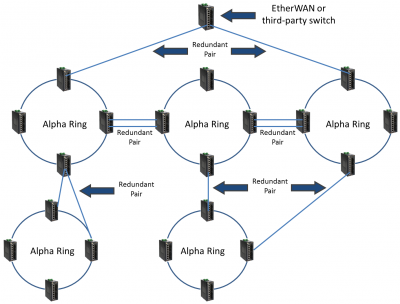
Figure 7: The Redundant Pair protocol offers extreme flexibility in designing a network, and ensures that uptime is maximized through multiple redundancies.
■ Redundant Pair Feature Description
- A redundant pair has specified ID, in a range from 1 to 253
- Each redundant pair is comprised of two paths: The ports connecting each path are defined as either “Normal” or “Slave.”
- The same role (Normal or Slave) must be used on the same side. See diagram below.
- Redundant pair is an event-based protocol. When a link in a Redundant Pair fails, the message is passed through the Alpha Ring path, and the backup link is activated within 50 milliseconds.

Figure 8: When configuring a redundant pair, both sides of the pair should have the same role (normal or slave), and both links should have the same pair ID.
■ Redundant Pair Configuration
To set up Redundant Pairs on a switch using the web interface:
- Change the Redundancy State to Enable.
- Click on the Update Setting button next to the Redundancy State
- Select the port that will act as a Redundant Port, and choose “Normal” or “Slave” with the radio buttons.
- Choose a Pair ID for the port.
- Click on the Update Setting button.
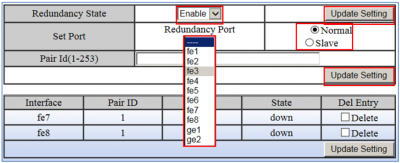
Figure 9: Redundant pairs can be easily set up using the web interface.
To enable Redundant Pairs on a switch using the CLI:
CLI Command Mode: Privileged Exec Mode
CLI Command Syntax: (no) redundancy pair enable
To set the redundancy pair normal (master) ID, the slave ID, or to make a port no
longer part of a redundant pair, use the following CLI commands:
CLI Command Mode:Interface Configuration mode
CLI Command Syntax:redundancy pair id <1-253>
redundancy pair slave id <1-253>
no redundancy pair
■ Show Ring Coupling, Port Coupling, and Redundancy Pair States
CLI Command Mode:Privileged Exec Mode
CLI Command Syntax:show ring-coupling state
CLI Command Syntax:show ring-coupling port-state
CLI Command Syntax:show redundancy pair
CLI Command Syntax:show redundancy pair
■ Usage Notes and Precautions
Because Redundant Pair is a proprietary EtherWAN protocol, there is no corresponding IEEE Standard. Redundant pairs do not support trunking. The three diagrams below demonstrate possible mistakes than may be made when configuring Redundant Pairs.
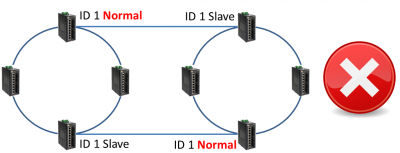
Figure 10: Both ports on the same side of a redundant pair must be assigned the same role.
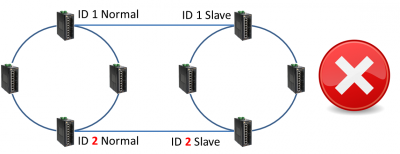
Figure 11: Both paths of a pair must have the same ID
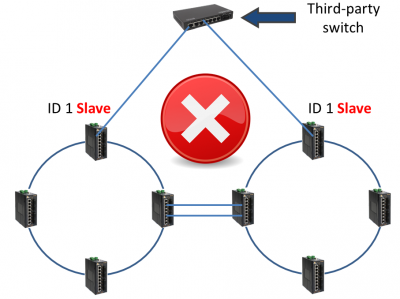
Figure 12: When connecting a Redundant Pair to a third party switch, the ports on the EtherWAN switches must be assigned the ‘Normal' role.
■ Summary
With support for up to 253 groups, and an activation time of 50 milliseconds in instances of failed links, EtherWAN's proprietary Redundant Pair protocol maximizes network availability through multiple redundancies, while providing the highest level of flexibility and scalability in network topologies. Refer to the Appendix at the end of this document for a list for EtherWAN switches that support Redundant Pairs.
■ Appendix – EtherWAN switches supporting Redundant Pair protocol (As of December 9, 2016)
 EX70900
EX70900 EX61000A
EX61000A EX71000
EX71000 EX62000
EX62000 EX72000
EX72000 EX63000
EX63000 EX73000
EX73000 EX83000
EX83000 EX74000
EX74000 EX75000
EX75000 EX76000
EX76000 EX78000
EX78000 EX78162
EX78162 EX78602
EX78602 EX27000
EX27000 EX77000
EX77000 EX87000
EX87000 EX29000
EX29000 EX89000
EX89000





